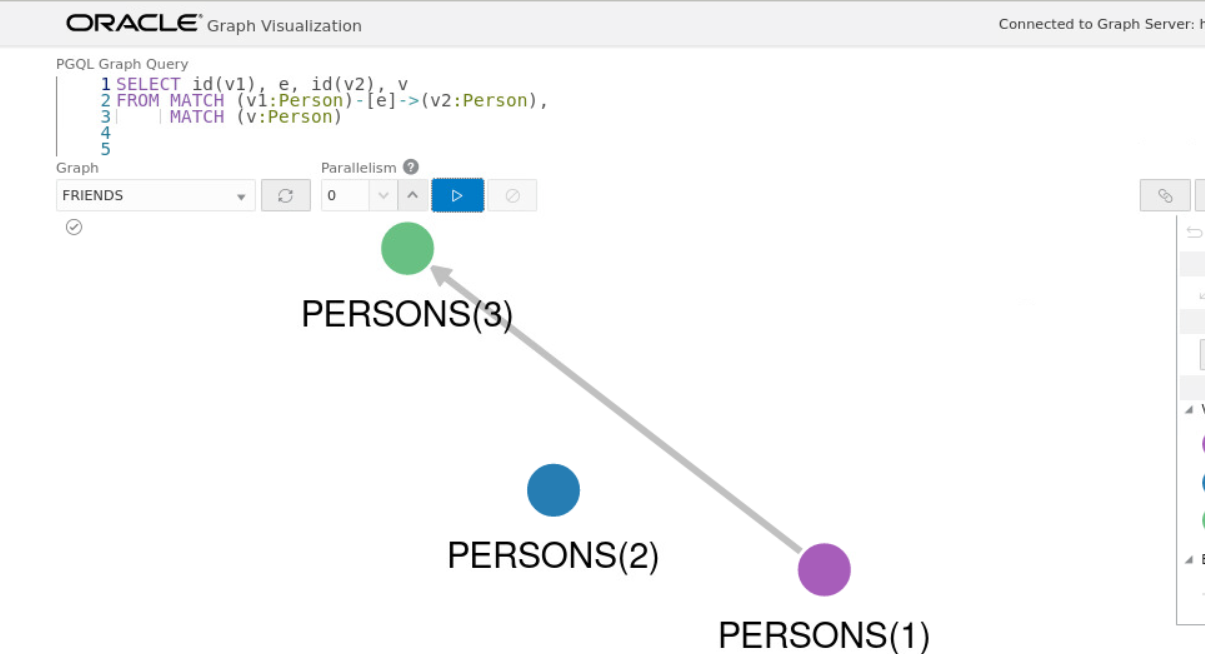3.3.1 PGQL Based Subgraph Loading
You can use the PgViewSubgraphReader#fromPgView API to
create an in-memory subgraph from a property graph view using a set of PGQL
queries.
These PGQL queries define the vertices and edges that are to be loaded into the subgraph. You can also use multiple PGQL queries and the resulting output graph is a union of the subgraphs, each being loaded independently by each PGQL query.
Note:
PGQL queries withGROUP
BY or ORDER BY clauses are not supported
for loading of subgraphs from a property graph view.
The following example create a subgraph using multiple PGQL queries
from the property graph view FRIENDS.
opg4j> var graph = session.readSubgraph().
...> fromPgView("FRIENDS").
...> queryPgql("MATCH (v1:Person)-[e:FRIENDOF]->(v2:Person) WHERE id(v1) = 'PERSONS(1)'").
...> queryPgql("MATCH (v:Person) WHERE id(v) = 'PERSONS(2)'").
...> load()
graph ==> PgxGraph[name=FRIENDS,N=3,E=1,created=1646726883194]PgxGraph graph = session.readSubgraph()
.fromPgView("FRIENDS")
.queryPgql("MATCH (v1:Person)-[e:FRIENDOF]->(v2:Person) WHERE id(v1) = 'PERSONS(1)'")
.queryPgql("MATCH (v:Person) WHERE id(v) = 'PERSONS(2)'")
.load();>>> graph = session.read_subgraph_from_pg_view("FRIENDS", ["MATCH (v1:Person)-[e:FRIENDOF]->(v2:Person) WHERE id(v1) = 'PERSONS(1)'",
... "MATCH (v:Person) WHERE id(v) = 'PERSONS(2)'"])
>>> graph
PgxGraph(name: FRIENDS, v: 3, e: 1, directed: True, memory(Mb): 0)The following displays the output for the preceding PGQL query using the graph visualization tool.
Parent topic: Loading a Subgraph from Property Graph Views
